Fractal Bitcoin: In-depth research report

転載元: jinse
04/28/2025·1Msummary :
Launched on September 9, 2024, Fractal Bitcoin may represent another blind spot between the East and West crypto markets. Although Fractal has occupied a considerable portion of Bitcoin’s computing power within the days since its launch, Fractal is still relatively new to many in the global crypto community. This study aims to reveal this innovative project that has gained attention quickly in the Bitcoin ecosystem.
Key points :
-
Ecosystem Integration : Fractal successfully integrates key players in the Bitcoin ecosystem, including the BRC-20, Ordinals and Runes communities, which puts Fractal ahead of the current Bitcoin trend.
-
Innovative mining methods : Fractal introduces a hybrid mining model that combines joint mining and free mining. This model provides a new perspective for PoW, proving that PoW is a robust approach to cybersecurity even when the industry is tilting towards PoS.
-
Bitcoin’s Pioneer Network : Due to its compatibility with the Bitcoin mainnet, Fractal provides developers with a realistic testing environment that provides valuable user data and activity insights. The activation of OP_CAT on Fractal marks the beginning of numerous expected experiments, cementing Fractal’s role as a proving ground for potential Bitcoin upgrades and innovations.
-
Having a strong user base from day one : Through its partnership with OKX and UniSat, Fractal successfully attracted the most active users of Bitcoin from the very beginning. This early adoption helped Fractal avoid the common "cold boot" problems on new platforms.
-
Grassroots and Community Orientation : Fractal maintains a pragmatic community-driven strategy to avoid over-hype and institutional influence. This strategy that focuses on organic growth and engagement is at its core.
1. Introduction
Fractal Bitcoin is the only Bitcoin scaling solution that uses the Bitcoin core code itself to recursively scale an infinite level of tiers, built on the world's most secure and widely held blockchain.
To fully understand Fractal’s innovation, we need to understand the historical context of the Bitcoin expansion discussion. In 2017, the SegWit soft fork was designed to increase Bitcoin’s block capacity, followed by the controversial Bitcoin Cash hard fork as another extension method. Since 2018, more and more attention has turned to second-tier solutions, such as Lightning Network. In this continuous exploration of Bitcoin’s scalability and functional enhancement, Fractal stands out as a new approach, providing a unique perspective to address these long-term challenges.
As an important milestone, Fractal’s mainnet was officially launched at 00:00 UTC on September 9, 2024. This launch has achieved remarkable success, demonstrating the strong appeal and technical robustness of the project. In just 24 hours after the main network was launched, Fractal's joint mining accounted for more than 40% of Bitcoin's total computing power, while free mining on Fractal accounts for 2% of Bitcoin's computing power. To better understand these data, Fractal's free mining computing power has exceeded the final computing power of Bitcoin Cash (BCH). This rapid adoption of miners shows high confidence in Fractal technology and its potential.
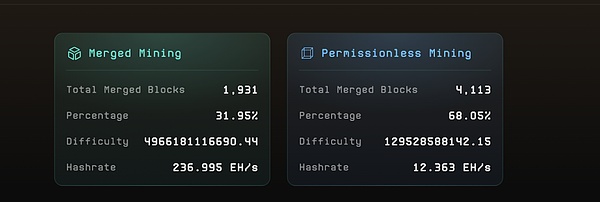
(snapshot taken at 10pm HKT on Sep 10, 2024)
The project attracted the participation of major players in the mining sector. Large mining pools such as F2Pool, Antpool and Spiderpool have joined Fractal's mining ecosystem. In addition, there are other well-known mining pools ready to participate, which suggests that the interest of the Fractal mining network is increasing and has the potential to further expand.
2. Core concepts and technologies
2.1 Native Bitcoin Extension
Fractal is a native extension of Bitcoin, and its approach distinguishes it from other extension solutions. By leveraging Bitcoin’s existing code base and modifying block production parameters, Fractal maintains full compatibility with the Bitcoin mainnet, ensuring seamless integration with existing infrastructure. This approach enables functional enhancement without affecting Bitcoin’s core security model, balancing innovation and maintaining the fundamental principles of Bitcoin.
2.2 Technical Specifications
Fractal introduces several key technological innovations:
-
Block Time : Fractal achieved 30 seconds of block time, which is a significant improvement compared to Bitcoin’s 10 minutes of block time. This faster block time allows transaction confirmation more quickly, greatly improving the user experience. Furthermore, it significantly increases the overall throughput of the network and has the potential to support a wider range of complex applications requiring high transaction volumes.
-
Mining mechanism : Fractal adopts a unique hybrid mining method. Two of every three blocks are mining without permission, and the other is mining in joint with Bitcoin. This innovative mechanism encourages decentralization by allowing individual miners to participate freely in two-thirds of block production. At the same time, it uses Bitcoin’s powerful computing power to enhance security through joint mining through each third block. This balance approach is designed to maintain cybersecurity and decentralization and incentivize existing Bitcoin miners to support the Fractal network.
-
Scalability : Fractal's architecture theoretically supports infinite layer improvements. Each Fractal layer provides a 20x capacity increase relative to the Bitcoin mainnet. This means that the base layer provides 20 times the capacity of Bitcoin, while the second layer will provide 400 times the capacity. This exponential scalability model allows Fractal to solve the throughput limitation problem of Bitcoin while maintaining the underlying layer security attributes.
-
Smart contract function : By implementing the OP_CAT opcode, Fractal has implemented Turing's complete smart contract on a Bitcoin-based platform. OP_CAT is a simple connection operation combined with other opcodes to implement complex smart contract logic. This feature provides possibilities for advanced DeFi protocols, complex NFT mechanisms, and other decentralized applications previously limited to the Ethereum platform.
-
Parallel execution : Fractal's architecture allows different applications to run their own instances so that specific optimizations do not affect the entire network. For example, gaming platforms can run on a specially optimized Fractal layer for high frequency, low value transactions, while DeFi protocols can utilize independent layers of parameter tuning for financial operations.
-
Compatibility : Fractal maintains 100% compatibility with Bitcoin standards such as BRC-20 and Ordinals. This ensures that existing Bitcoin tokens and NFTs run seamlessly. In addition, users can use the same address between the Bitcoin mainnet and Fractal, simplifying the user experience and reducing the risk of errors in address management.
Lorenzo, founder of UniSat and core contributor to Fractal, outlined his vision in response to community questions.

2.3 Unique user experience
Unlike other Bitcoin Layer 2 solutions, the wallet address on Fractal is exactly the same as the main network address. This design provides Ethereum- like convenience, where users can access different layers by simply switching the network in a UniSat or OKX wallet. Unlike other Bitcoin Layer 2 solutions that require a separate EVM wallet address, Fractal allows users to continue using Bitcoin mainnet addresses during Layer 2 activities. As of now, major wallets such as OKX Wallet and UniSat Wallet serve most active Bitcoin DeFi and collectible users and fully supports Fractal Bitcoin.

3. Fractal’s position in the Bitcoin ecosystem
3.1 Comparison with other Bitcoin solutions
Fractal enters a highly competitive Bitcoin expansion solutions market. Here is a comparison of it to some of the main alternatives:
-
EVM-compatible Layer 2 : Some projects try to create an EVM-based layer 2 solution for Bitcoin. While these solutions are relatively easy to implement and launch, there are significant challenges in acceptance of the Bitcoin community. The Bitcoin ecosystem, especially its core users and developers, often sees these EVM-compatible solutions as "stitching monsters." By contrast, Fractal takes a Bitcoin native approach designed to expand Bitcoin capabilities without introducing external architectures. This approach may be more in line with the philosophy of Bitcoin purists and may enable better integration and adoption within the existing Bitcoin ecosystem.
-
Bitcoin Cash (BCH) : Bitcoin Cash emerged as a hard fork of Bitcoin, aiming to improve scalability through larger block sizes. This approach leads to disagreement within the Bitcoin community and forces users to choose between two competing Bitcoin visions. The fork of BCH has sparked a lot of political debates, often obscuring the contents of technical discussions. By contrast, Fractal takes a fundamentally different approach. Instead of creating a standalone chain or forcing users to make choices, it embraces Bitcoin as the mainnet and seeks to expand it locally. Fractal's architecture allows the creation of multiple instances to scale together, which may provide unlimited scalability without sacrificing the security or decentralization of the underlying layer.
-
Lightning Network : Lightning Network performs excellently in fast, low-cost payments and high privacy, but its smart contract capabilities are limited and it faces channel liquidity issues. In contrast, Fractal provides complete smart contract support, no channel management is required, and provides a simpler user experience.
3.2 Marketing strategy and built-in user base
Fractal stands out in the competitive Layer 2 sector, not only relying on technological innovation, but also gains advantages through a strategic market approach and a strong built-in user base. With the support of UniSat, UniSat is the leading Bitcoin wallet with approximately 1 million weekly active users, which enables Fractal to reach an already actively engaged audience.
Many UniSat users already hold assets such as BRC20 tokens and Runes in their wallets. These users naturally want to have a cheaper, faster, and more functional trading environment. Fractal is just able to meet this need directly, providing an improved transaction experience while maintaining familiarity and compatibility with the Bitcoin ecosystem these users are accustomed to.
This in-house user base gives Fractal a significant advantage over other Layer 2 solutions and new blockchain platforms, which often face the challenge of attracting initial user base from scratch and building network effects. By leveraging UniSat's existing user base, Fractal may bypass the barriers to early adoption.
In addition, Fractal’s strategy on growth metrics also distinguishes it from many other blockchain projects. While many Layer 2 solutions and new blockchains view total lock value (TVL) as a core indicator, Fractal plans to use transaction count as its Polaris indicator. This strategy fits with its own user base, which is likely to naturally generate large amounts of transactions when interacting with existing assets on a more efficient platform.
By focusing on trading volume rather than TVL, Fractal is able to demonstrate real use and adoption, which may be more attractive to users and investors in the long run. This strategy also sets Fractal apart from numerous projects that focus on TVL numbers.
4. Ecosystem construction
Fractal’s ecosystem development strategy is committed to decentralization and community-driven growth. This section provides an overview of Fractal’s strategies for building a strong, diverse ecosystem.
4.1 Decentralization concept
The core of Fractal ecosystem construction is a firm commitment to decentralization. This concept is reflected in several key aspects:
-
Diverse cross-chain bridge solutions : Unlike some Layer 2 solutions that rely on a single official bridge, Fractal encourages multiple cross-chain bridge methods between the mainnet and its network. This approach reduces the risk of single point failure and promotes cross-chain interactive innovation.
-
Open development environment : Fractal does not mandate specific development frameworks or methods, allowing developers to innovate freely within the ecosystem.
-
Community-driven governance : Ecosystem direction is determined primarily by community input and initiatives, rather than by central authority unilaterally.
-
Distributed Infrastructure : Fractal promotes distributed infrastructure development and encourages multiple parties to participate in the construction of key components of the ecosystem.
4.2 Start users and developers
Fractal implements a series of strategic plans to initiate user and developer engagement:
-
User Rewards Program : After the mainnet went online, Fractal distributed 1 million FB tokens to more than 100,000 eligible addresses from OKX Wallets and UniSat Wallets, a move that established an extensive FB token holder base, laying the foundation for increased participation in Fractal activities.
-
OKX Wallet Partnership : The successful partnership with OKX Wallet shows Fractal’s ability to work with key players in the cryptocurrency space, significantly expanding its potential user base.
-
Developer Incentives : Through various funding programs and developer resources, Fractal incentivizes developers to contribute to the growth of the ecosystem.
4.3 Funding Programs and Project Assessment
Fractal’s grant program is designed to support and inspire projects that contribute to ecosystem growth and conform to the philosophy of decentralization:
-
Post-Focus Backtracking Pattern : Fractal adopts a backtracking funding method that rewards based on the actual impact of the project rather than speculative commitments. This model encourages high-quality work and substantial results.
-
Evaluation criteria : Project evaluation criteria include its contribution to the ecosystem, technological innovation, alignment with Fractal’s decentralization principles, and potential for long-term impact.
-
Diversified Project Types : This funding program supports a wide range of projects from core infrastructure development to application-level innovation, ensuring a comprehensive ecosystem.
4.4 Outstanding funding projects
Through Fractal’s grant program, several key projects have been supported:
-
sCrypt : Enhances Fractal's scripting capabilities to implement complex smart contracts on the Bitcoin network.
-
F2Pool : As a primary mining pool, it contributes to the security of Fractal and provides key feedback on mining capabilities.
-
Nubit : Develop data availability (DA) layer that supports scalable applications, including Ordinals and Layer 2 solutions.
-
DeTrading : supports cross-chain atomic exchange without central institutions or collateral, simplifying trustless transactions on Fractal.
-
UniWorlds : Create an immersive environment on Fractal, developing and building interoperable virtual worlds and gaming toolkits.
-
FractalEcosystem.io : A community-driven directory that demonstrates Fractal projects that enhance the transparency and discoverability of the ecosystem.
4.5 Future Outlook
Looking ahead, Fractal is expected to achieve sustained growth and innovation in its ecosystem:
-
Expanded Funding Program : The upcoming Season 1 Post-First Funding Program (September 9-October 9, 2024) will accelerate ecosystem development.
-
Community Engagement : The community rewards and community committees planned to be launched in the fourth quarter of 2024 will deepen the direction of community participation ecosystem.
-
Potential use cases : Fractal’s architecture supports a wide range of future applications, including advanced DeFi protocols, enhanced NFT capabilities, enterprise solutions, and decentralized identity systems.
-
Scalable Infrastructure : As the ecosystem grows, Fractal will continue to support scalable infrastructure development to accommodate growing network activity.
-
Cross-chain interoperability : Future development may focus on enhancing interoperability with other blockchain ecosystems and expanding Fractal’s influence and uses.
5. Token Economics and Economic Models
Fractal has designed a comprehensive token economy model that aims to ensure long-term sustainability while maximizing value for communities and investors. The model inspires all participants in the ecosystem, from miners to developers, to jointly promote network growth and success.
5.1 Token details
-
Name: FB (Fractal Bitcoin)
-
Maximum supply: 210 million
-
Total supply: 105,153,225.00000000
-
Circulation supply: 1,213,225.00061300
-
Main uses: transaction fees (in the Fractal ecosystem)
- Secondary uses: voting, application
5.2 Token allocation
Fractal’s token allocation strategy is designed to promote cybersecurity, incentivize growth, and reward key contributors throughout the ecosystem. The specific allocations are as follows:
-
Proof of Work Mining (50%) : 50% of the total supply is allocated to Proof of Work (PoW) mining. This important allocation allows Fractal to closely connect with Bitcoin’s security model, ensuring network security and reliable block production.
-
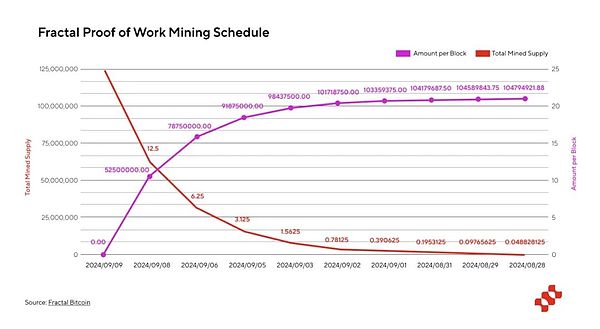
-
Ecosystem Reserves (15%) : This section is used to invest in the Fractal ecosystem to support and fund projects to improve the ecosystem and to fund Fractal’s continued core improvements. Within 10 years, up to 10% of the pool can be used each year.
-
Community Rewards (10%) : Used to establish partnerships and liquidity programs. These community-led initiatives aim to increase network engagement over time. Similar to ecosystem reserves, the pool can be used up to 10% per year for a period of 10 years.
-
Presale (5%) : This section is allocated to early stage investors to cover initial development and operational costs, as well as conduct security audits. These tokens have a seven-month lock-up period, after which they will be released linearly until the end of the twelve months.
-
Advisor Pool (5%) : Reserved to current and future advisors who will provide strategic advice and support for Fractal’s continued development. Up to 20% of the year will be used every year.
-
Core Contributors (15%) : Assigned to those who build and maintain Fractal core software. These tokens follow the same locking and release plans as pre-sale tokens.
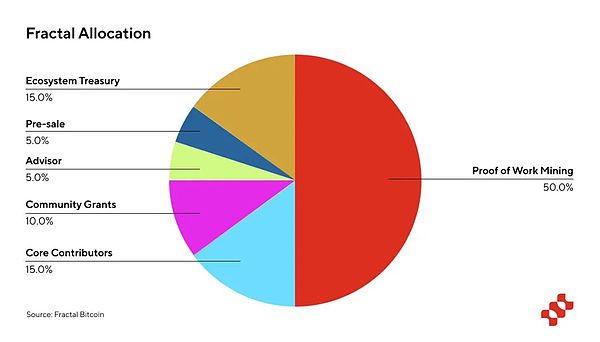
5.3 Release and lock-up period
To ensure long-term commitment and to align interests:
-
Presale and core contributor tokens have a seven-month lock-up period, followed by linear release until the end of the twelve months.
-
The maximum annual release of ecosystem reserves and community reward tokens is 10% in 10 years.
-
The maximum annual release rate of consultant tokens in 5 years is 20%.
5.4 Transparency and OP_CAT Governance Voting Mechanism
For complete transparency, Fractal has published the official addresses of each token allocation category that can be tracked when the main network is online. This transparency facilitates the community to monitor the allocation and use of tokens.
In addition, Fractal encourages all users to participate in the ongoing governance process and contribute to project development. Proposal content may include protocol upgrades, parameter adjustments, and allocation decisions for ecosystem reserves or community reward funds. This participatory approach is designed to ensure that Fractal responds to community needs and adapts to changing market conditions.
The Fractal team plans to adopt a OP_CAT-based governance voting mechanism. This innovative approach will be the first application in the Bitcoin field. By enabling OP_CAT, Fractal token holders will vote on proposals directly within the Fractal ecosystem.
6. Team and Partners
6.1 Core Contributors
Fractal Bitcoin is built by experienced teams in the Bitcoin ecosystem:
-
UniSat : As a leading Bitcoin wallet, UniSat has over 900,000 weekly active users, with extensive experience in designing, implementing and supporting Bitcoin standards such as BRC-20 and Ordinals and securely managing high-value digital assets. Their participation increases the credibility of the project and provides a large potential user base for early adoption.
-
Block Space Force : The co-founder successfully built and expanded world-class projects such as Coinbase, CoinMarketCap and Cobo. They have decades of experience in the USD A9 exit and investing in 100x projects and developing the most commonly used blockchain applications in the world, demonstrating their expertise in expanding blockchain projects from concept to mass adoption, addressing regulatory challenges in the cryptocurrency space, and managing investor relations.
6.2 Developer Platform Partnership
Fractal is supported by the Scrypt team, which is using OP_CAT to build a smart contract meta protocol on Bitcoin. This partnership may bring important synergies, including jointly developing advanced smart contract standards, shared security audits, best practices, cross-platform promotion and ecosystem construction.
7. Challenges and risks
While Fractal proposes innovative ways to expand Bitcoin capabilities, it also faces challenges that require consideration by potential investors and users:
Programmability is the main challenge facing Fractal. Because it is 100% compatible with the Bitcoin mainnet, Fractal uses Bitcoin scripts for programming, which may hinder the growth of the ecosystem. To better understand this issue, according to a developer report from Electric Capital, Bitcoin has 1,071 monthly active developers, while Ethereum has 7,864 monthly active developers.
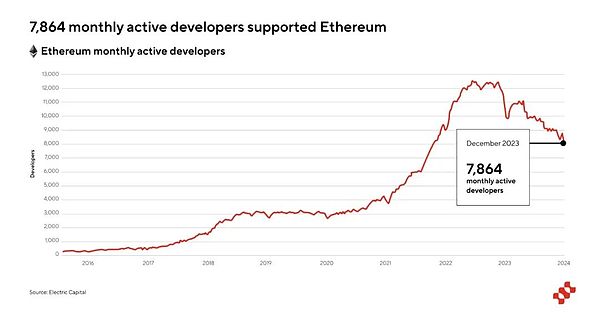

Bitcoin Script is not as well known as popular languages like Rust or Solidity, and is more challenging to use, which can lead to a smaller number of developers. Fractal has a high coding barrier, and its functionality may not be as good as other blockchains, which may slow down the ecosystem’s expansion. In addition, the development tools, libraries and frameworks for Bitcoin scripts are relatively immature compared to other blockchain environments, which may further hinder application development and deployment on Fractal.
Technical risks also pose significant challenges. Modifying the core parameters of Bitcoin and implementing new features such as OP_CAT is inherently at risk of introducing vulnerabilities or unexpected consequences. Managing recursive scaling and multi-level complexity adds technical challenges.
Adoption risk is another major challenge. Fractal may face resistance from Bitcoin extremists who believe any modification or extension to Bitcoin is unnecessary or potentially harmful. Convincing users and developers to move from established Layer 2 solutions or other blockchain platforms to Fractal can be difficult, especially given the network effects of these existing solutions. Additionally, despite Fractal compatibility, the Runes, Ordinals, and BRC-20 communities may be reluctant to adopt the same standards. These communities have built their own ecosystems and may not think there is enough incentive to migrate or expand to new platforms, even if it provides better performance. Fractal needs to articulate its value proposition clearly and potentially provide significant incentives to drive initial adoption of these user groups. The challenge lies not only in providing technological advantages, but also in overcoming the inertia of established communities and their existing investments on the current platform.
To address these challenges, especially programmability issues, Fractal may require substantial investment in developer education, create powerful development tools, and possibly explore ways to make the development process easier to use without compromising its integration with the Bitcoin core.
8. Conclusion
Fractal Bitcoin represents a breakthrough approach to extending Bitcoin capabilities. As the only Bitcoin scaling solution that recursively scales infinite layers with the Bitcoin Core code itself, Fractal offers a unique value proposition in the highly competitive Layer 2 solution market.
The main advantages of Fractal include:
-
Native Bitcoin Integration : Fractal maintains full compatibility with the Bitcoin mainnet, enabling seamless integration with existing infrastructure while enhancing its capabilities.
-
Technological Innovation : With 30 seconds of block time, hybrid mining methods and support for OP_CAT, Fractal significantly improves transaction speed and implements complex smart contracts on a Bitcoin-based platform.
-
Built-in user base : Fractal has significant advantages in overcoming the "cold start" problem. Supported by UniSat Wallet, Fractal has a solid foundation of over 1 million weekly active users and has launched a program through the Fractal mainnet, with 100,000 active addresses holding FB tokens, which are the most involved users in the Bitcoin ecosystem. In addition, the full integration of OKX wallets further expands Fractal’s potential user base in the OKX ecosystem.
-
Strong mining and network security : Obtain 30-40% of the Bitcoin computing power through joint mining, and obtain 1-2% of the Bitcoin computing power through free mining.
-
Ecosystem Development : Through strategic funding programs and community initiatives, Fractal is actively fostering a diverse ecosystem covering DeFi, gaming and core infrastructure development.
-
Unique User Experience : Fractal's approach allows users to use the same address between the Bitcoin mainnet and Fractal, providing an Ethereum-like network switching experience.
-
Team with a long-term perspective : Fractal’s core contributors have been building in the Bitcoin and crypto industries since 2013, which has helped the team take a longer-term industry perspective to drive Fractal to a wider audience.
However, Fractal also faces some major challenges:
-
Programmability : Bitcoin scripts may pose a barrier to developers who are more familiar with Solidity or Rust.
-
Technical Risk : There are inherent risks in modifying the core parameters of Bitcoin and implementing new features such as OP_CAT.
-
Adoption barriers : Convincing users and developers to move from established solutions to Fractal can be challenging.
Despite the challenges, Fractal’s innovative approaches, strong support and early adoption of mining show great potential. The project successfully attracted major mining pools and the rapid growth of computing power after it went online is a particularly encouraging signal.
As the ecosystem continues to develop, Fractal is positioning itself as an innovative Bitcoin application platform in various fields, which may reshape the utility and adoption landscape of Bitcoin. The planned OP_CAT-based governance voting mechanism further reflects Fractal’s commitment to innovation within the Bitcoin ecosystem.
Despite the opportunities and challenges ahead, Fractal Bitcoin represents a bold move in Bitcoin’s expansion journey. Its success may profoundly affect the future of Bitcoin and blockchain ecosystems. Just like any emerging technology, potential investors and users should carefully weigh the project’s potential with its risks and pay close attention to its technology development, ecosystem growth and market adoption.


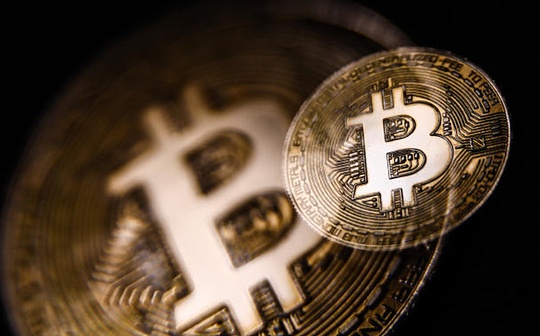


 panewslab
panewslab